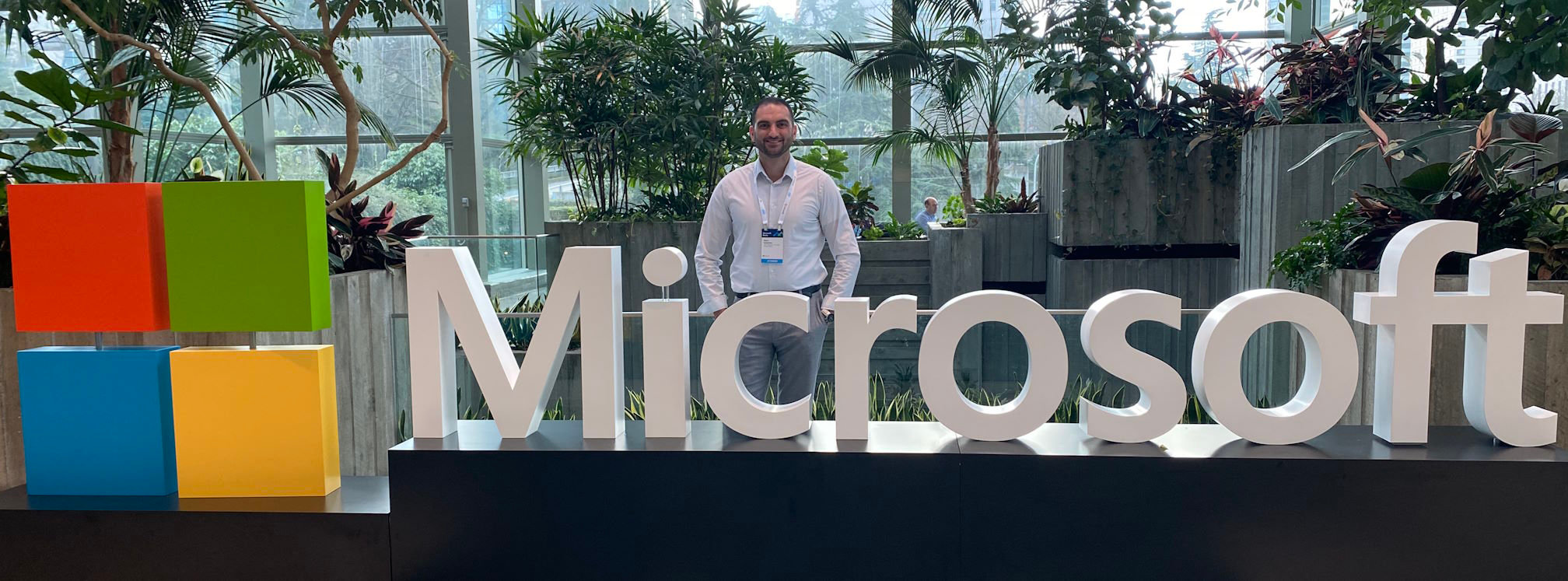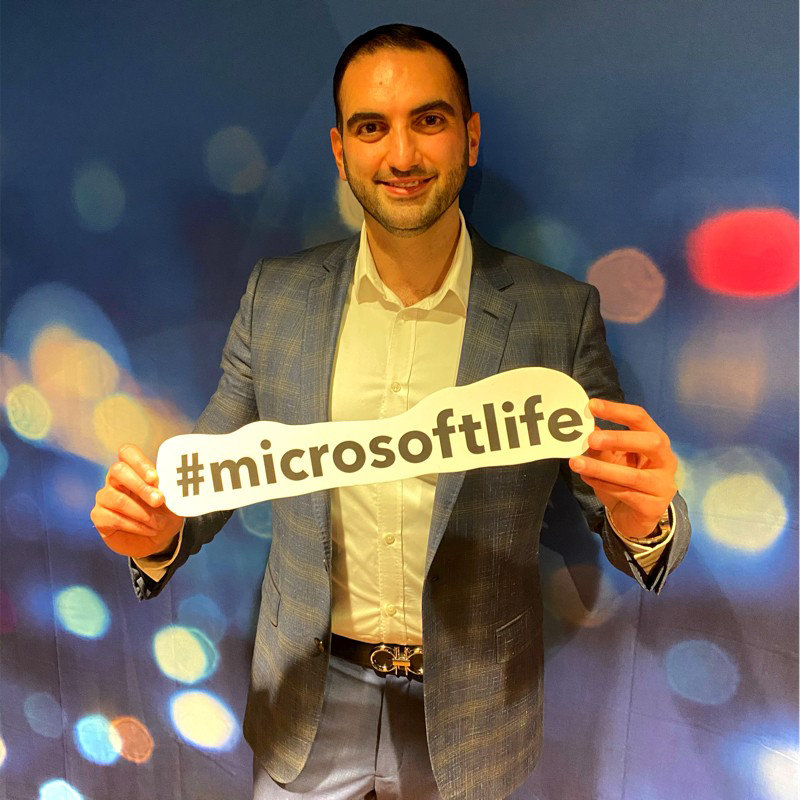Sam Istephan
Detroit, USA
As the Lead Architect on the Microsoft Innovation Hub North America AI Team, Sam brings added depth and expertise in machine learning and natural language processing to engagements with clients all across the country.
“I like to joke that my middle name is Chat GPT,” he says from his home in Michigan. He has his Ph.D. in Computer Science with a specialty in machine learning and was formerly the lead Data and AI Architect at the Detroit Hub.
Sam’s role is a function of the rapid growth of artificial intelligence in the last half decade. Partnering with local Technical Architects, Sam and colleagues look for opportunities to leverage Azure Open AI, Dynamics, and the rest of the Microsoft and partner portfolio to help clients take full advantage of its promise.
We caught up with Sam between customers and asked him to walk us through one of his typical engagements.

A typical customer engagement
Before the day
Engagement preparation
Customers are invited to take part in an engagement by the Hub by their account team - typically when Microsoft believes our solutions would assist with a tough busines problem or opportunity. The Center’s Director has a call with the account team to determine the scope of the engagement and to assign the relevant Technical Architect or Architects.
Setting the agenda
Once the Architect team is established, there’s a conversation with customer to provide more information. This helps shape the agenda, nail down high-level objectives, and figure out logistics. This is the point we’ll work out the most suitable offering – from a design-thinking envisioning workshop, a strategy session, prototyping, or something else. Now the engagement is beginning to take shape. If need be, we will pull in another Architect, Microsoft team member, or partner resource. It could be a someone from our Global Black Belt team or product team if they can provide something specific the engagement needs.

On the day
Morning
9am - Objectives
The clients arrive and check in. The Hub has different rooms to accommodate the different working styles of each engagement – if you’re talking strategy you might be in a traditional briefing suite, if you’re building code or making something physical it could be our innovation factory, or flexible suite. We begin with intros and objectives on a whiteboard, and then I go back around and ask if anyone has objectives to add. Once objectives are done, we’ll prioritize them and move into mutual discovery.
10am - Mutual discovery
Mutual discovery is a very important process for us. It builds upon the preparation we have done together. We look at it in this framework: current state, desired state, business impact. We continuously ask more questions to understand where the customer is trying to go—peeling the onion. The idea is to stay off the solution and keep learning, because you might discover your first instinct for a solution was incorrect. Customers often report this is the most valuable part of their visit as it helps them get a much better collective understanding of their situation – and even before we start to improve it, that’s really helpful.
11am - Client regroup
A lot of times these are big enterprise clients flying in and they don’t actually spend a lot of time together. At this point it’s nice to give them a moment to regroup and check in with each other and make sure the engagement is on the right track.
12pm - Relevant demos
Now the client begins to see the immersive aspect of the Hub. We’ll have a variety of demonstrations set up, based on what we learned in discovery, that will show them what’s possible in a functioning, tangible fashion. We don’t use slides here very much. At the same time, we’ll use it as an opportunity to present edge cases based on trends we see or applications from tangential industries. To keep things interesting we’ll likely move rooms to the envisioning theater – these are purpose built theaters which allow us a lot of technical flexibility in how we show multi-persona demos. Most Centers have huge LED walls for this, some of the original ones have stage sets like a home, office, etc.
Afternoon
1pm - Lunch
We’ll stop and have something to eat. Very often catered from one of the excellent restaurants in Metropolitan Detroit. Depending on the office, a Hub can have in-house catering, so a working lunch is a possibility. Customers likely go exploring during lunch too – we have a ton of live demos from Microsoft and partners in our experience zone – everything from real manufacturing equipment line automation to telemedicine devices.
2pm - Discussion
The afternoon is mostly about turning what we learned in the morning into action. It depends on the type of engagement we’re running. That could be creating a reference architecture if it was an architecture design session, settling on next steps for a strategy session, or crafting an impact/difficulty matrix for a human centered design engagement.
3pm - Prioritization
We look at how to prioritize next steps through a Three Horizon lens. Horizon One are almost low hanging fruit, quick to implement. Horizon Two is your multi-year objectives based on tangible results you have seen elsewhere, and Horizon Three is long term innovation, often bold in nature. Having the account team and a partner in the room really helps here, as we can assign tasks immediately.
4pm - Feedback
At the end of the day, we’ll provide the client with a download of the whiteboard we’ve been working on (we use Surface Hubs so it’s digital and easily searchable) as well as any necessary links or slides shown. Every session ends with a survey, and we put the results in a Power BI Data Lake, and we’ll get a score on how well the engagement went as well as get to read actual feedback. This is a great opportunity for us to see what’s working well, or any areas that need improvement.
That was a day with Sam. Every engagement at the Hub is different, since each one is designed specifically for one customer and their needs. What doesn’t change is the focus on discovery, demonstration, and digital transformation.

Imagine what's possible

Explore Microsoft and partner products

